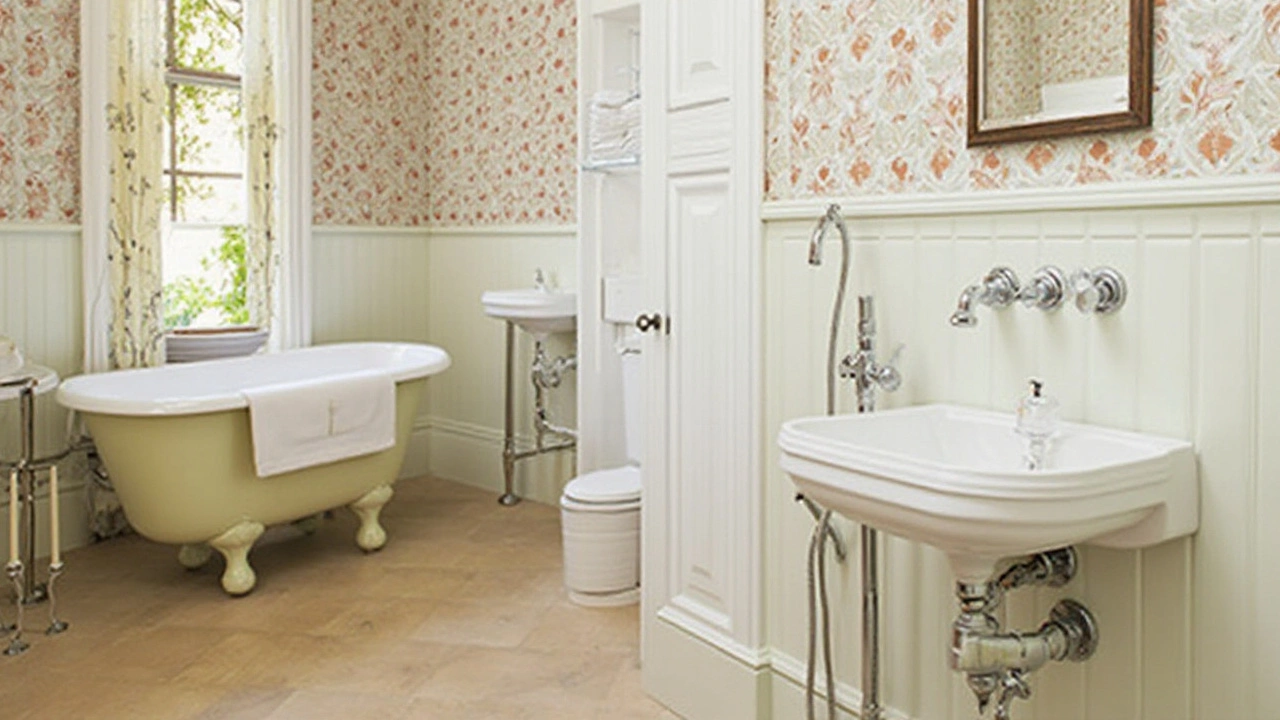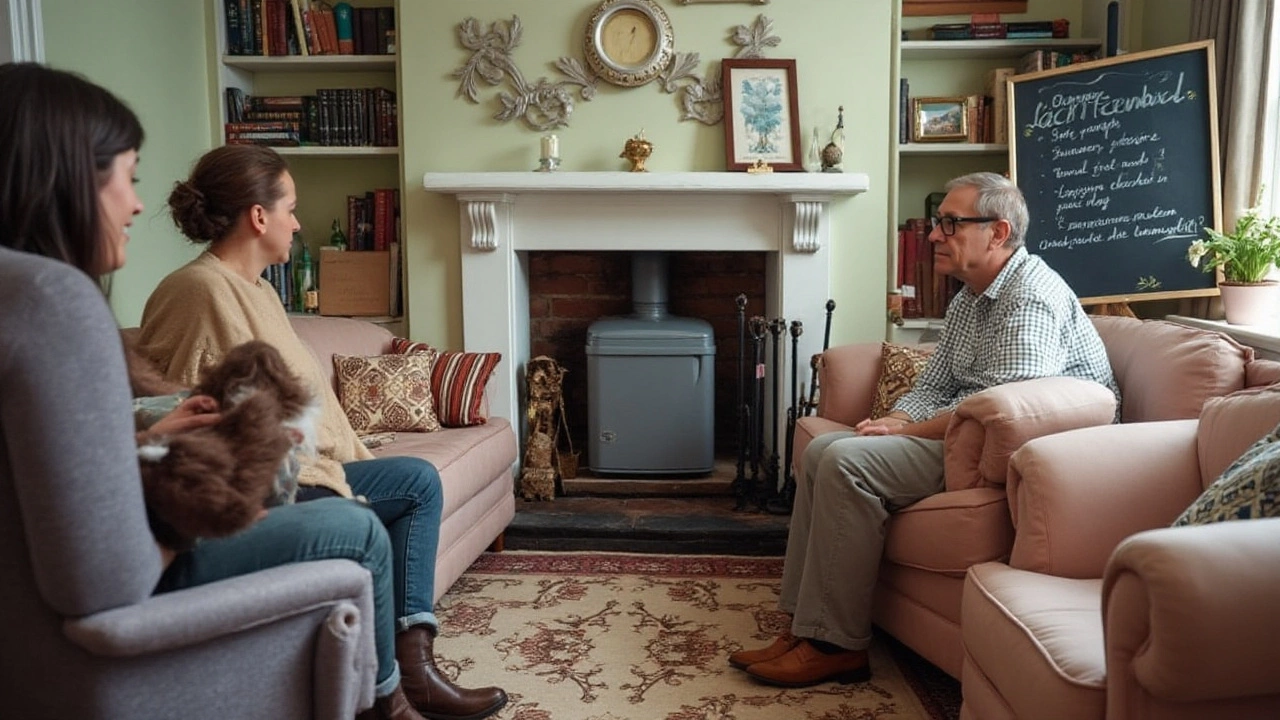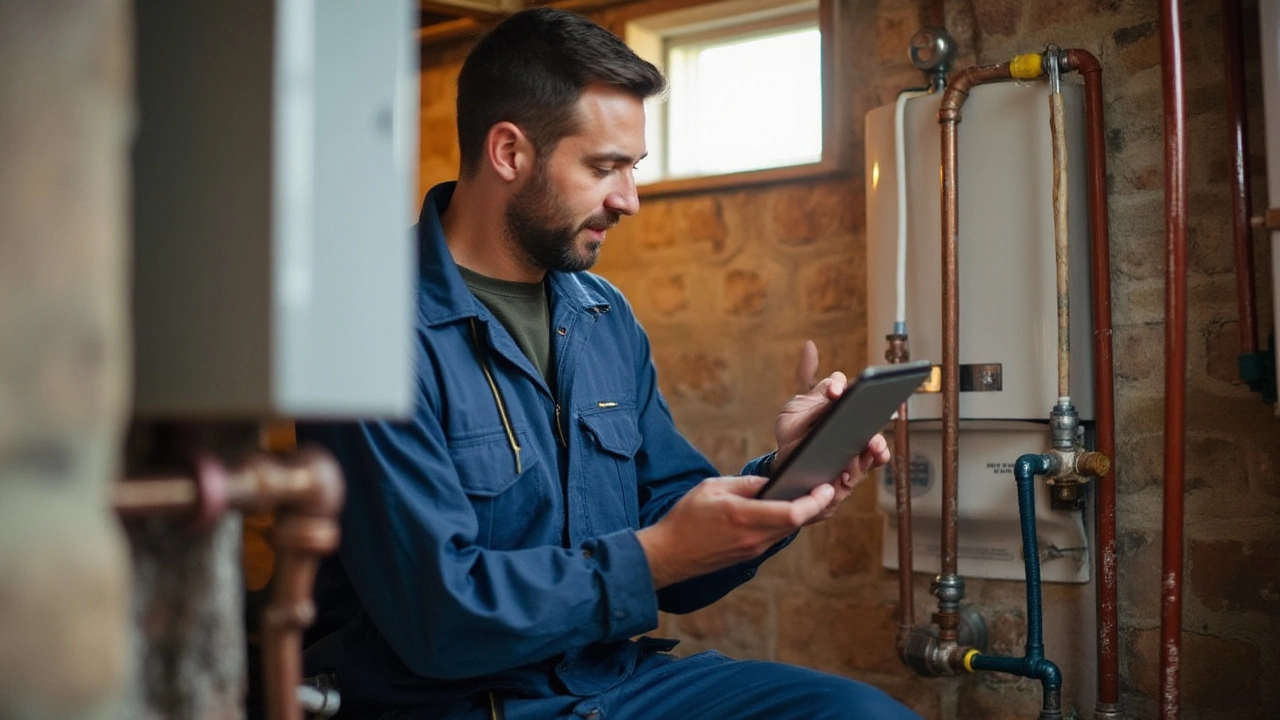Replacing a boiler is one of those tasks every homeowner dreads. It can seem daunting with so many interconnected systems at play in your household. A common question is whether you can still use the toilet during this process. Knowing how your plumbing and heating systems work together helps you navigate the situation with ease.
It's not just about comfort. It's about ensuring everything runs smoothly, even when primary systems are temporarily offline. With some insight and preparation, you can keep life's daily chores on track, even amidst repair chaos.
- Understanding Plumbing Systems
- Impact of Boiler Replacement on Toilets
- Managing Bathroom Use
- Practical Tips for Homeowners
Understanding Plumbing Systems
Plumbing systems in homes are a web of pipes, valves, and fixtures that work together to provide clean water and remove waste. At the heart of these systems is a network designed to bring you convenience and sanitation. Understanding how your plumbing operates is crucial, especially when you're dealing with situations like a boiler replacement.
Your home’s plumbing is divided into two main subsystems. The first subsystem brings fresh water into your home, turning on when a tap or faucet is opened. The second is tasked with removing wastewater. These subsystems operate in tandem, ensuring your toilets, sinks, showers, and baths run smoothly. During a boiler replacement, these systems can be affected, but knowing their basic workings can help you anticipate issues and manage them effectively.
The fresh water subsystem uses a high-pressure mechanism to move water swiftly and efficiently. This ensures water reaches every part of the home, from the top-floor bathroom to the kitchen sink. It’s regulated through a series of valves and stops, which are strategically placed for maintenance access. Understanding these components can be beneficial when the water pressure needs adjusting during disruptions, such as boiler repairs.
"Home water systems are designed with user convenience and safety in mind, ensuring seamless daily operations even during maintenance," states Plumbing Engineer Magazine.
The wastewater subsystem, in contrast, operates via gravity. It takes advantage of the slope and natural fall to carry wastewater out of your home into the municipal sewer lines. This system contains traps and vents intricately designed to prevent backflow and release harmful gases. If you're planning a boiler replacement, knowing the structure of these waste pipes helps in understanding potential disturbances and how to address them.
An important fact to note is that most plumbing repairs, including boiler replacements, demand a thorough understanding of these subsystems. Sometimes, replaced boilers might reconnect incorrectly, leading to imbalanced water pressures and erratic temperatures. This is why certified professionals often handle such tasks. Knowing the fundamentals not only equips you to deal with minor inconveniences but also to monitor the work being done effectively.

Impact of Boiler Replacement on Toilets
The fear of suddenly not being able to use your own bathroom during a boiler replacement sends a shiver down anybody's spine. Your boiler plays a critical role in how effectively your home functions, not just focusing on heating, but more intricately tied to how smoothly water flows around your house. This is due to the fact that many boilers are directly tied into the central plumbing system that includes **toilet use**. But what does it really mean when the boiler is out of commission? The key concern here is water pressure. In a typical setup, the boiler contributes to the water pressure that helps with flushing efficiency. Without it, you might experience less power in each flush. This doesn't necessarily mean your toilet will stop working altogether, but the reduced pressure might result in an extra flush or two, particularly if you utilize a modern dual-flush system. Understanding this nuance can relieve a lot of unnecessary stress.
Another aspect influenced by boiler replacement is water temperature. Although toilets use cold water primarily, a boiler replacement could involve shutting down the water system entirely, albeit temporarily. Knowing this, it becomes imperative to have a contingency plan, such as storing water for any necessary manual flushes. This ensures that, while the water heating components might pause, you still maintain the crucial ability to use your facilities. It’s worthwhile noting here a tip that pro-plumbers often suggest, and it might sound odd — keep a couple of large buckets filled with water handy. There are proven methods where just pouring about two gallons quickly into the bowl can mimic the pressure of a full flush. The science hinges on gravity – a DIY trick that never goes out of fashion.
During a boiler replacement appointment, the service team might need to turn off the **plumbing tips**, affecting more than just heating. According to experts at HomeServe, "Understanding the layout of your home's pipes and how they interact with the boiler system is crucial during such replacements." This insight helps anticipate disruptions and prepare adequately. This proactive knowledge results in fewer surprises, hence, fewer frustrations. Getting equipped with nimble knowledge about your plumbing setup can lead to cost-saving maneuvers, like opting for a temporary on-demand water heater that ensures efficiency in these adjustment phases.
Beyond the flow and temperature, replacement can also lead to minor perplexities like noises and intermittent pipe hisses. These are typically harmless, often occurring as air makes its way through the pipes in the absence of a boiler’s usual foothold in maintaining pressure balance. It’s acceptable to feel a little on edge with these unexpected auditory cues echoing through your home. They won't last, as once the new boiler begins to run full throttle, original acoustics and pressures return. Home systems are an orchestra in harmony, and each part eventually finds its rhythm. Making sure there's open communication with the service technician can address these concerns and make the transition smoother and less intimidating.

Managing Bathroom Use
When faced with boiler replacement, understanding how to manage bathroom use is crucial to maintaining comfort in your home. It's important to recognize how interconnected your water and heating systems are, and what changes may occur when a boiler is taken offline. First, it's worth knowing that your toilet is still functional without a working boiler, as it relies primarily on the cold water supply. However, the absence of hot water can impact any household activities that require warmth, such as cleaning and hygiene routines. A primary step in managing bathroom use effectively during this time is knowing how to prioritize water-related activities and adapt current habits to fit within the limitations imposed by the boiler work.
If you have experienced plumbers handling your boiler replacement, they might temporarily switch off water supplies for safety and installation purposes, potentially affecting toilet use. Given this, it's wise to plan toilet use around these anticipated downtimes. A schedule or heads-up from the professionals can thus be very helpful. For those involved in this process, communicating clearly with your plumbing team about daily bathroom needs can prevent unnecessary inconveniences. Another strategic tip is to arrange a household routine which maximizes daytime operations when water supplies are typically accessible. By planning accordingly, the impact of sporadic water shut-downs can be minimized.
Household Routine Adjustments
Taking a closer look at your daily routine, certain adaptations can go a long way. For instance, adjusting your schedule for showers by coordinating with available hot water during off-peak construction times ensures minimal disruption. Where possible, use alternatives like public facilities or showers at work or gyms if your routine gets severely hampered. It's not a luxury everyone has but exploring these options might be the key to maintaining comfort. Furthermore, storing some water in large containers can facilitate emergencies and ensure the functionality of your toilet. This careful approach to management during boiler changeovers isn't just about convenience, but a matter of necessity for comfort.Bathroom safety can't be overstated especially with children or elderly residents. Signage indicating water status can prevent mishaps, ensuring family members are well informed. Keeping non-slip mats handy in case of residual water spills mitigates common risks. An interesting fact: according to a 2022 study by Plumbing Manufacturers, minor water interruptions like these can foster improved water conservation habits within households. This shows that every disruption holds its silver lining by encouraging sustainable water practices. A simple but essential move is organizing your bathroom supplies in anticipation of potential need for quick access. Toilet paper, hand sanitizers, and even small boiled water containers for washing can be useful placeholders when full services are resumed. Such little preparations can alleviate hassle when it matters most, providing a semblance of order amidst maintenance chaos.

Practical Tips for Homeowners
When your boiler is getting a facelift or entirely replaced, the disruption can be quite overwhelming. But fret not, because there are ways to maneuver through these tricky times smoothly. First, it's crucial to have a chat with your plumber about the impact on your water systems, including implications on your toilet use, beforehand. Knowing which systems will be affected can prepare you for any temporary hurdles. You might even ask if there are specific hours when you can use the facilities without causing complications. Always keep the lines of communication open with the professionals managing the job, as this can save a lot of hassle down the road.
Organizing your day around the replacement can significantly cut down on frustration. If possible, schedule any water-heavy activities like showers or laundry for when the work is not ongoing. This ensures that you won’t accidentally throw a wrench into the plumbing works by flushing at the wrong moment. Having a few essential supplies also comes in handy. Fill pitchers or jugs with water to be used for manual toilet flushing if you hit a snag and the power has to be turned off.
Moreover, assess any alternative water sources available to you and make a list. Sometimes local gyms or community centers offer temporary passes for showers. And never underestimate the power of good neighborly relations—your next-door neighbor might welcome you to use their bathroom facilities while yours are compromised. It’s these small considerations that can keep your household running smoothly even when the pressure is on.
Plumbing tips also include being prepared for the unpredictable. Consider having a backup heating option if the replacement takes longer than expected. Many homeowners find portable electric heaters a worthwhile investment, especially during winter months. Additionally, insulating any exposed pipes can prevent them from freezing if the absence of constant hot water leaves the system vulnerable. Carefully assess the areas in your home where pipes are exposed to the cold, as preemptive measures are always smarter.
A great resource, as noted by homeowner advisor Mary B. Lisker, states,
"Preparation and communication with your service provider are key. Knowing the timeline and the specific system impacts can significantly alleviate any stress during a home repair process."This sentiment echoes the importance of being informed and prepared, especially when dealing with extensive repairs like a boiler replacement.

I am an expert in the services industry with a focus on appliance repair. My passion lies in understanding how things work and educating others in simple, engaging ways. This enthusiasm fuels my writing, where I delve into topics around appliance maintenance and troubleshooting. I aim to make these subjects clear and accessible to all readers.